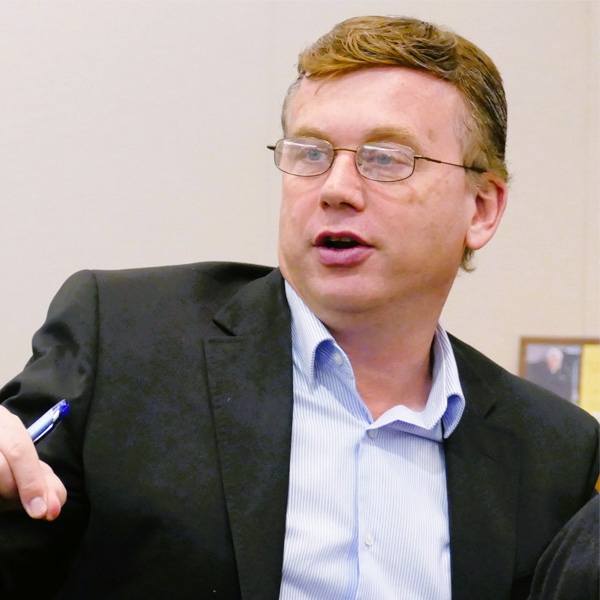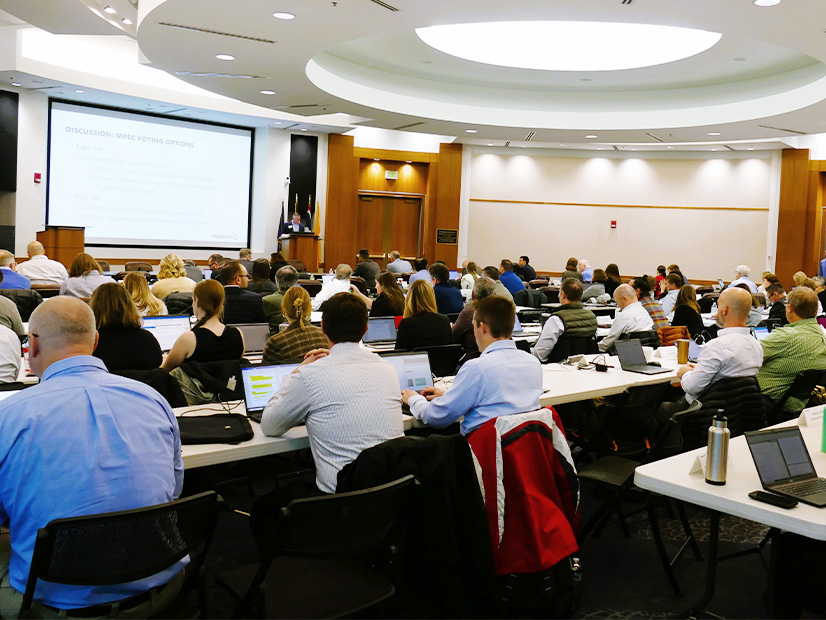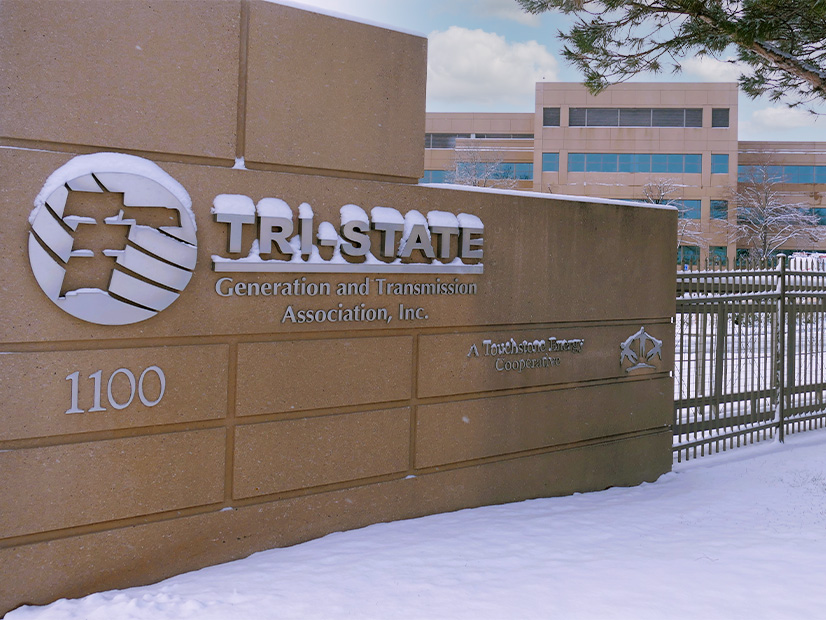WESTMINSTER, Colo. — Steve Wright, a newly minted member of SPP’s Board of Directors who has promised to “strengthen the bridge” to the grid operator’s potential members in the Western Interconnection, put his words into action last week during a two-day development session for its RTO-light Markets+ service offering.
Stepping to the podium Wednesday to help open the meeting’s second day, Wright fondly recalled his time in the Pacific Northwest, where he served as the Bonneville Power Administration’s CEO before retiring last year as general manager of Washington’s Chelan Public Utility District.
“I was always very proud of the collaboration work we did at Bonneville. We did a lot of really important stuff,” Wright told stakeholders.
But that experience did little to prepare him for SPP’s bottom-up, stakeholder-driven governance structure.
“Just in my short time at SPP, I see collaboration on steroids. In fact, it’s almost collaboration to the point of deference to stakeholders and what they want,” said Wright, who joined the board in October. (See “Membership Elects 2 New Directors,” SPP Board/Members Committee Briefs: Oct. 25, 2022.)
 Aly Koslow, Arizona Public Service | © RTO Insider LLC
Aly Koslow, Arizona Public Service | © RTO Insider LLCCollaboration is also important to Arizona Public Service (APS), said Aly Koslow, the utility’s director of federal regulatory affairs and compliance.
“We are really keenly focused on some of the collaboration benefits that we see [in Markets+],” she told RTO Insider. “The fact that we haven’t had a more organized day-ahead market to join for a long time has made reaching our individual clean-energy goals a little bit less clear.”
APS has a target of delivering 100% carbon-free energy by 2050. Koslow said the utility has a “good idea” about how it will reach 80% of that goal but said, “That last 20% is much more difficult to achieve. It’s going to be new technology, and it’s going to be collaboration.”
“That is a big part of why we are looking to potentially join a market,” she added.
Koslow was joined by dozens of other representatives from Western utilities at Tri-State Generation and Transmission’s headquarters outside of Denver. Like APS, the potential RTO stakeholders are comparing SPP’s Markets+ offering with CAISO’s Western Energy Imbalance Market (EIM) and its extended day-ahead market (EDAM).
CAISO has a head start, but SPP is attempting to close the gap with a transitional real-time balancing market similar to its Western Energy Imbalance Service (WEIS). (See SPP Briefs: Week of Nov. 7, 2022.)
“That is a part of the dynamic out here,” Garrison Marr, senior manager of power supply for Washington’s Snohomish Public Utility District, said Friday of the ongoing RTO evaluation. “The value proposition is really relative to our counterfactual today of an unorganized bilateral market that can be pretty inefficient as we move through the trading trajectory.”
If SPP has a leg up in the competition with CAISO, it’s the RTO’s governance model that gives stakeholders an enormous say over policies and processes. The grid operator says it gets that Western utilities place “high value” on having a voice in shaping the “ever-changing energy landscape” and that the “Western utility landscape represents many diverse interests that must be balanced in every decision.”
“These objectives are at the heart of who SPP is and how we do what we do,” SPP says in its draft Markets+ service offering. “Our customer-driven approach will ensure Western customers get the products and services they need at affordable rates they help control.”
“This whole voting system is designed to give you power, and the board sees itself as primarily managing process to make sure we get the process that leads to the decisions that lead to as much consensus as possible,” Wright said.
SPP’s potential market participants have responded positively. Mark Holman, managing director of Canadian power marketer Powerex and a vocal supporter of Markets+, said governance is one of two pillars of a successful market, along with resource adequacy.
 Mark Holman, Powerex | © RTO Insider LLC
Mark Holman, Powerex | © RTO Insider LLC“What we want to see happen in any governance framework is that we never end up with a situation where a minority of participants that are very large can drive decisions, but also that we end up with a situation where a majority of participants, but a very small share of the footprint, can drive decisions,” Holman said.
SPP has proposed a five-member Markets+ Independent Panel (MIP), unaffiliated from market participants and stakeholders, that reports to the RTO’s Board of Directors and oversees a Markets+ Participants Executive Committee (MPEC). The MPEC would direct the market’s working groups — likely focused on operations reliability, seams and market design — and task forces; an ad hoc settlements group has already been proposed.
The grid operator’s staff have recommended a two-tiered voting structure, with the first tier requiring a 67% approval threshold from three sectors (investor-owned utilities, public power, and public interest organizations and independents). The second tier would be a regional vote with a 51% approval threshold.
Staff hope to have the structure in place when Markets+’s first development phase begins in April. If the Phase 1 participants are unable to agree on the MIP’s representation, SPP has proposed that a subcommittee of its board be used in the interim, with one of the directors staying on the MIP to smooth the transition.
Paul Suskie, the RTO’s general counsel, conducted a straw poll on governance preferences by asking for a show of hands. By a 17-13 margin, stakeholders indicated they would like to stand up an MIP before Phase 1 but were not opposed to the board subcommittee structure.
SPP plans to add a Markets+ State Committee (MSC), like the Regional State Committee in the Eastern Interconnection. The Western states will determine their level of involvement and the MSC’s composition during Phase 1.
Suskie told his audience that while in New Orleans earlier in the week for the National Association of Regulatory Utility Commissioners’ annual meeting, a FERC commissioner told him, “You have the fewest protests at FERC because you work it out with the stakeholder process.”
Staff said they have received a large set of comments supporting the proposal that a common resource adequacy program be a prerequisite for Market+ participation. The Western Power Pool is several steps ahead there, having begun a Western Resource Adequacy Program (WRAP), the West’s first regional reliability planning and compliance program, at the request of regional utilities. The WPP has filed a tariff at FERC and has asked for a response by mid-December.

“We plan to respond to whatever may come, and I’m very confident that we will resolve the process in a positive manner. We’re very confident that we will be operating under the tariffs shortly,” WPP CEO Sarah Edmonds said, asking that those in the region “come forward” with contractual and financial commitments.
Fortunately for SPP, its staff have been working closely with WPP since 2019 in helping set up and manage the WRAP. A joint task force will be established early in Phase 1 to determine how the program will interact with Markets+.
Unlike CAISO’s EDAM, the WRAP will not have a separate, binding resource-sufficiency test.
“A lot of us are at this table for that reason,” Koslow said during the meeting. “If resource adequacy was great in CAISO, this conversation would not be happening. I’m really worried about what that might look like in EDAM.”
Referring to the “challenges we’ve had with resource adequacy in the EIM,” Russ Mantifel, Bonneville’s EIM program manager, said, “It would be great … if the best landing spot for everybody was as a member of WRAP.”
SPP plans to release the final service offering in late November after it addresses the comments received in Westminster and on the draft offering. It will engage through March with the entities who have committed to funding Phase 1; staff have projected that will cost $9.7 million and take about 21 months.
Those entities that commit to the funding will be eligible to vote on design decisions and ensure Markets+ keeps moving forward, staff said. During the phase, staff and stakeholders will work on the protocols and tariff language that will be filed at FERC. At the same time, staff will explore an opportunity to add Markets+’s energy imbalance market, with a target implementation date of June 2024.
SPP has assumed that by Phase 2, when the day-ahead market is designed, Markets+ will be about a 50-GW system with up to 30 balancing authorities and 90 market participants. The phase is estimated to take three years and cost about $130 million, staff said, based on their experience with the day-ahead Integrated Marketplace they launched in 2014.
Staff said they will look for ways to minimize costs for entities who choose to transition from Markets+ to SPP’s RTO West. They said seven parties are expected to decide whether to become RTO members by March.


